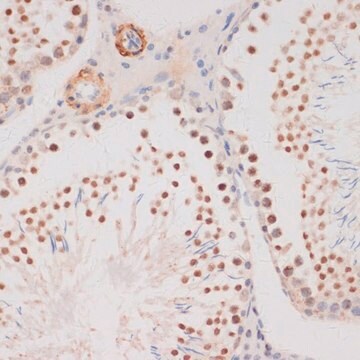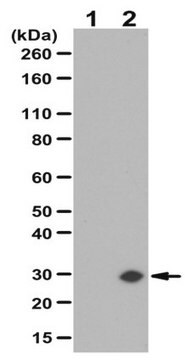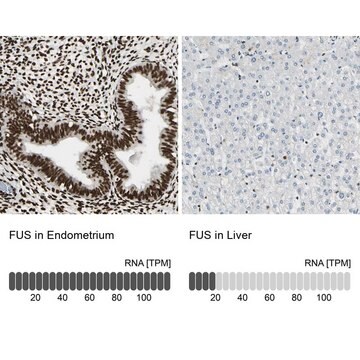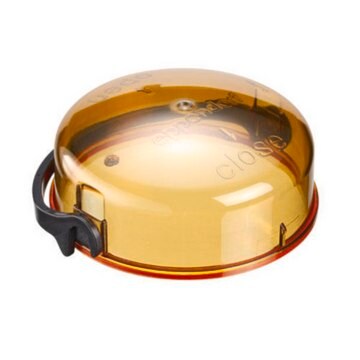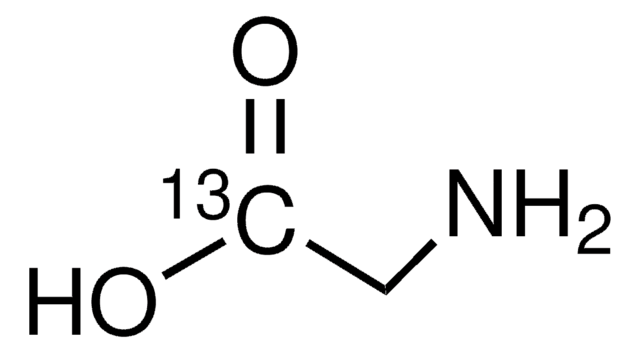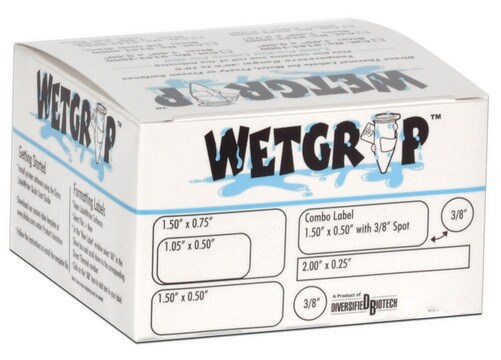MABN1616
Anti-GADD153/DDIT3/CHOP Antibody, clone 5E5.3
clone 5E5.3, from mouse
Sinonimo/i:
DNA damage-inducible transcript 3 protein, CCAAT/enhancer-binding protein homologous protein, C/EBP-homologous protein 10, C/EBP zeta, CHOP, CHOP-10, DDIT-3, Growth arrest and DNA damage-inducible protein GADD153
About This Item
Prodotti consigliati
Origine biologica
mouse
Livello qualitativo
Forma dell’anticorpo
purified immunoglobulin
Tipo di anticorpo
primary antibodies
Clone
5E5.3, monoclonal
Reattività contro le specie
human
tecniche
immunocytochemistry: suitable
immunohistochemistry: suitable (paraffin)
western blot: suitable
Isotipo
IgG1κ
N° accesso NCBI
N° accesso UniProt
modifica post-traduzionali bersaglio
unmodified
Informazioni sul gene
human ... CEBPZ(10153)
Descrizione generale
Specificità
Immunogeno
Applicazioni
Immunohistochemistry Analysis: A 1:50 dilution from a representative lot detected GADD153/DDIT3 in human brain, kidney, and skeletal muscle tissue sections.
Neuroscience
Apoptosis - Additional
Qualità
Western Blotting Analysis: 1.0 µg/mL of this antibody detected GADD153/DDIT3 in 10 µg of HUVEC lysate.
Descrizione del bersaglio
Stato fisico
Stoccaggio e stabilità
Altre note
Esclusione di responsabilità
Non trovi il prodotto giusto?
Prova il nostro Motore di ricerca dei prodotti.
Codice della classe di stoccaggio
12 - Non Combustible Liquids
Classe di pericolosità dell'acqua (WGK)
WGK 1
Punto d’infiammabilità (°F)
Not applicable
Punto d’infiammabilità (°C)
Not applicable
Certificati d'analisi (COA)
Cerca il Certificati d'analisi (COA) digitando il numero di lotto/batch corrispondente. I numeri di lotto o di batch sono stampati sull'etichetta dei prodotti dopo la parola ‘Lotto’ o ‘Batch’.
Possiedi già questo prodotto?
I documenti relativi ai prodotti acquistati recentemente sono disponibili nell’Archivio dei documenti.
Il team dei nostri ricercatori vanta grande esperienza in tutte le aree della ricerca quali Life Science, scienza dei materiali, sintesi chimica, cromatografia, discipline analitiche, ecc..
Contatta l'Assistenza Tecnica.